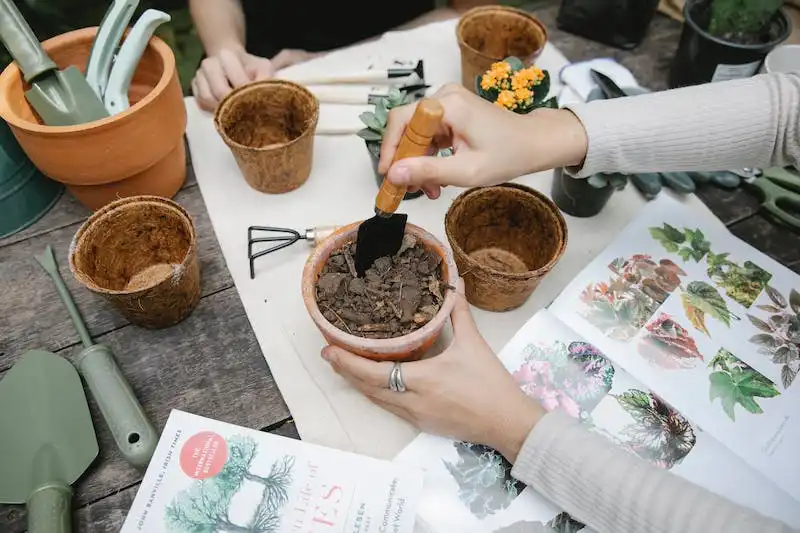China aster, also known as Callistephus chinensis, is a popular flowering plant that is cultivated worldwide. It is native to China and belongs to the Asteraceae family. This heat-loving plant thrives in long, hot summers and produces beautiful blooms that attract bees and butterflies.
When planting China aster, it is important to choose a well-drained soil and a sunny location. This annual can tolerate some shade, but it will bloom best in full sunlight. It is also important to water the plant regularly, especially during dry periods. China aster is known for its long flowering period, which can last from early summer to the first frost.
China aster is a low-maintenance plant that requires minimal care. It is resistant to many common diseases and pests, making it an ideal choice for busy gardeners. However, it is important to clear the soil from any weeds or debris before planting to prevent soil-borne diseases. It is also recommended to fertilize the plant with a balanced fertilizer once a month to encourage healthy growth and abundant flowering.
China aster plants can grow up to 2-3 feet tall and have a rough-textured, ovate foliage. The flowers of China aster come in a wide variety of colors, including pink, purple, red, white, and blue. The large, colorful blooms make China aster a popular choice for borders and flower beds.
In conclusion, China aster is a beautiful and easy-to-grow annual plant that can add color and vibrancy to any garden. With minimal effort and care, this plant will reward gardeners with its long-lasting, attractive blooms. Whether planted in a border, flower bed, or container, China aster is sure to be appreciated for its beauty and charm.
How to Grow and Care for China Aster
If you’re looking for a colorful and easy-to-grow flowering plant for your garden, China aster (Callistephus chinensis) is a great choice. This beautiful annual belongs to the Asteraceae family and is native to China. With its ovate, toothed leaves and large, showy flowers, the China aster is sure to attract attention.
When it comes to growing China aster, it is best to start from seed. Sow the seeds directly into the well-drained soil in late spring or early summer, after the last frost has passed. Choose a sunny location for your China aster, as it thrives in full sun or light shade. The ideal temperature for growing China aster is between 60 to 70 degrees Fahrenheit (15 to 21 degrees Celsius).
China aster requires regular watering to ensure it receives enough moisture. Be careful not to overwater, as this can lead to root rot. It is recommended to water the plants deeply, once or twice a week, depending on the weather conditions. Applying a balanced fertilizer during the growing season can also help promote healthy growth and abundant flowering.
Aster leafhopper is a common pest that can attack China aster plants. These insects suck the sap from the leaves, causing them to turn yellow and wither. To manage this pest, you can use insecticidal soap or spray with neem oil. Regularly inspecting your plants for any signs of pests or diseases is key to keeping them healthy.
China aster is relatively low maintenance, but there are a few care tips to keep in mind. It is best to thin the seedlings when they are about 2 to 3 inches tall, leaving about 12 inches of space between each plant. This will give the aster plants room to grow and prevent overcrowding. Removing faded flowers will encourage the plants to produce more blooms.
China aster blooms appear in a wide range of colors, including purple, pink, white, red, and blue. You can choose varieties that complement your garden design or create a colorful border with mixed shades. These flowers are also great for cutting and can be used in bouquets or flower arrangements.
In terms of diseases, China aster can be susceptible to powdery mildew, leaf spots, and root rot. To prevent these diseases, it is important to provide good air circulation around the plants and avoid overhead watering. Mulching around the base of the plants can also help retain moisture and suppress weed growth.
Whether you’ve grown China aster before or are trying it for the first time, with the proper care and attention, this beautiful flowering plant can easily become a star in your garden. Its attractive blooms, combined with its rough-textured leaves and pleasant smell, make it a delightful addition to any outdoor space.
In conclusion, China aster is a lovely annual plant that is easy to grow and care for. It can be grown from seed directly in the garden and prefers a sunny location with well-drained soil. Regular watering, proper spacing, and removing faded flowers are important for its health and flowering. By following these care instructions, you can enjoy the beauty of China aster in your garden.
China Aster Care
The China aster, also known as Callistephus chinensis, is a colorful annual flowering plant that belongs to the asteraceae family. Known for its vibrant blooms, the China aster is a popular choice among gardeners looking to add some color to their gardens. This article will provide you with all the information you need to know to care for your China aster plants.
Growing Conditions
China asters prefer well-drained soil and require at least six hours of full sun each day. They can tolerate a wide range of soil types, but they do best in moist, fertile soil. It is essential to ensure that the soil is adequately drained to prevent root rot.
Watering
China asters need regular watering, particularly during hot and dry periods. It is crucial to water them deeply but less frequently to encourage strong root development. Water the plants at the base to avoid wetting the leaves, as this can lead to the development of diseases such as leafhopper.
Fertilizing
You can fertilize your China asters with a balanced fertilizer formula, such as a 10-10-10, at the time of planting. Fertilizing once every two weeks with a water-soluble fertilizer can also help encourage healthy growth and blooming.
Temperature and Frost
China asters are sensitive to frost and do not tolerate cold temperatures well. It is best to plant them after the last expected frost date in your area. They thrive in temperatures between 60-70°F (15-21°C) and can tolerate hotter conditions as long as they are adequately watered and protected from direct sunlight during the hottest part of the day.
Pests and Diseases
Common pests that may affect China asters include leafhoppers and aphids. These can be controlled through regular monitoring and the use of organic pest control methods. Disease-wise, China asters are susceptible to soil-borne diseases, so it is important to practice good garden hygiene and provide proper spacing between plants to aid airflow and prevent the spread of diseases.
Additional Care
- China asters can grow tall, so staking may be needed to support the plants.
- Deadheading the flowers promotes more blooms and prevents seed production.
- Thin the plants to ensure good air circulation and prevent overcrowding.
- If you’ve written a theme around color, choose China asters for their wide range of shades, from white and pink to purple and blue.
By following these care guidelines, you can ensure that your China asters thrive and put on a beautiful display in your garden. Enjoy their colorful blooms and appreciate the effort you’ve put into growing these stunning flowers!
Light
China aster is an annual plant that grows best in full sun. For optimal growth and flowering, it requires at least 6 hours of direct sunlight each day. Asters can tolerate some shade, but they may not produce as many flowers and the ones they do produce may be smaller.
When selecting a place to plant your China asters, choose a location that receives plenty of sunlight throughout the day. The soil should be well-draining and rich in organic matter, as asters prefer moist but not waterlogged conditions.
In southern regions, where the summers can be particularly hot, China asters benefit from some afternoon shade to protect them from scorching sun. They can also tolerate some drought once established, but regular watering will help them maintain their colorful blooms for a longer period of time.
In areas with hot climates, it is best to plant China asters in early spring or autumn, as they may struggle to tolerate the heat and humidity of summer. Planting them before the last frost date will allow them to establish their root system before the hot weather sets in.
Overall, China asters are relatively tolerant to different light conditions, but they will thrive and produce their best displays of blooms when grown in full sun with some shade in hot regions. Pay attention to their sunlight needs and make sure to provide them with the right conditions to encourage healthy growth and flowering.
Soil
Proper soil preparation is key to the successful growth of China aster plants. Whether you are growing them from seedlings or directly sowing the seeds, the soil needs to be well-draining and rich in organic matter. China asters prefer a slightly acidic soil with a pH between 6.0 and 6.5.
Asters can tolerate a wide range of soil types, including sandy, loamy, and clay soils. However, well-draining soil is crucial to prevent waterlogging and root rot. If your soil tends to hold water and becomes waterlogged, amend it with organic matter like compost to improve drainage.
China asters thrive in full sunlight, although they can also tolerate partial shade. If you are growing them in a hot climate, providing some afternoon shade can help the plants withstand the intense heat. Plant them in a location where they receive at least 6 to 8 hours of sunlight per day for best blooming.
The annuals in the China aster family are known for their large and colorful blooms. To encourage flowering, it is important to provide regular moisture to the plants. Water them deeply once or twice a week and avoid over-watering, as China asters are susceptible to root rot.
In terms of fertilizer, a balanced fertilizer with a ratio of 10-10-10 is suitable for China asters. Apply the fertilizer according to the instructions on the package, usually once a month during the growing season. Over-fertilizing can lead to excessive foliage growth at the expense of flower production.
China asters can be vulnerable to some diseases, such as powdery mildew and leaf spot. To prevent these problems, avoid overhead watering and ensure good air circulation around the plants. Removing any diseased or dead plant material from the garden is also important to reduce the risk of disease spread.
When it comes to thinning the seedlings, it is best to choose the strongest and healthiest-looking plants to retain. Thin the seedlings to a spacing of 6 to 12 inches apart to allow for proper air circulation and prevent overcrowding. Thinning is best done when the seedlings have a couple of sets of true leaves.
China asters have a bushy growth habit and can grow up to 2 feet tall. To support their long stems and prevent them from flopping over, they may require staking. Use bamboo stakes or plant supports to keep the plants upright.
China asters are relatively drought-tolerant once established, but they do appreciate regular watering during prolonged dry periods. Be careful not to over-water during the winter months or in frost-prone areas, as this can lead to root rot. Watering once every 10 to 14 days is usually sufficient during the dormant season.
In conclusion, providing the right soil, sunlight, water, and fertilizer, and taking necessary precautions against diseases and overcrowding are the key to growing healthy and colorful China aster plants. By following these guidelines, you can enjoy the beauty of these vibrant flowers in your garden displays for months on end.




